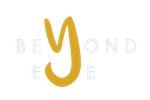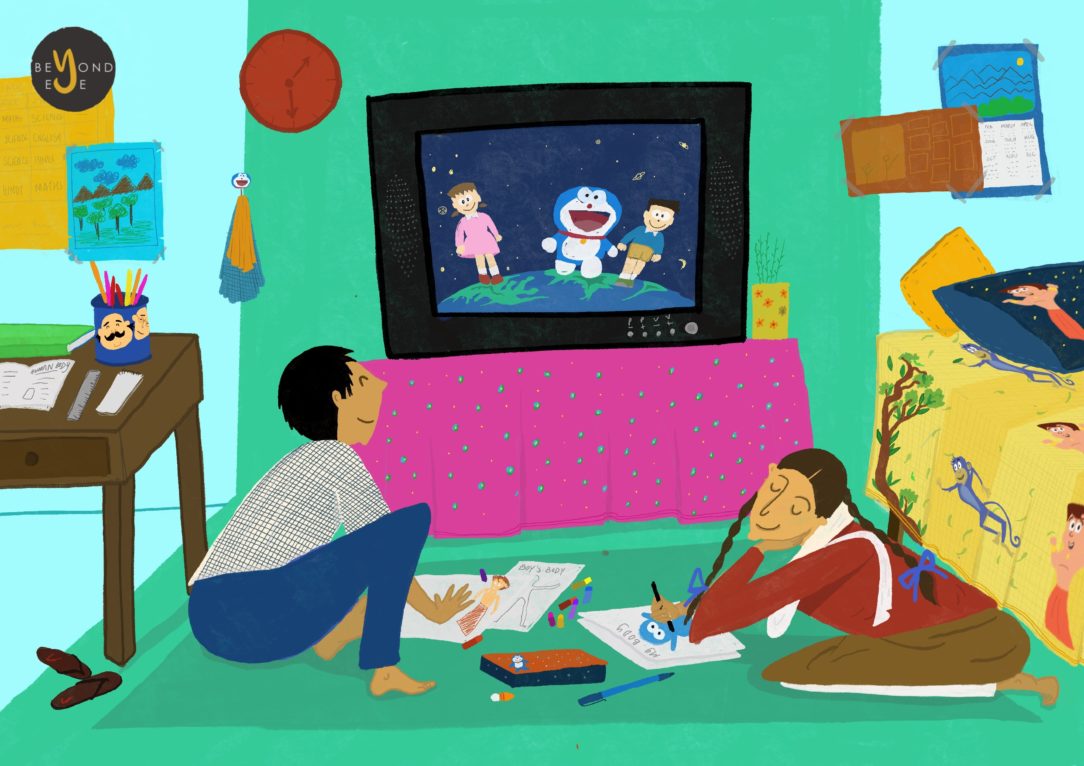
Adolescents (10-14 years old) are known to have a short attention span leading towards a need to adopt creative methods to build engaging conversations on Sexual and Reproductive Health (SRH) issues. If such methods are not entertaining and interactive for adolescents, then they might lose their interest in the discussions. Such constant need can be fulfilled by developing visual tools for facilitation that are adolescent-friendly and engaging. These tools include board-games, comic series, posters, placards, story-book, videos among many to make the conversations not only informative but also amusing for adolescents.
In this article, we will highlight some of the findings from the desk research organized by Beyond Eye to understand the currently available visual tools for the age group of 10-14 years old by the government. This research was conducted as a part of Beyond Eye’s project on co-developing SRH visual tools with adolescents in Rajasthan and Uttarakhand. Under this research, we looked at the aspects of age-appropriateness, entertainment, interactiveness, and relatability. We will be sharing some findings from this research to present the framework of visual tools in SRH policies of India. For this research, we have primarily looked at information education communication and behaviour change communication (IEC/BCC) resources available under the National Health Mission, a flagship program by the Government of India, for Rashtriya Kishore Swasthya Karyakaram (RKSK) and Adolescent Education Programme (AEP) programs. RKSK and AEP are key programs to provide SRH to adolescents. In this part of the project, we have only scrutinized available SRH visual facilitation aid tools for the age group of 10-14.
Towards the end of this article, we will suggest adopting adolescent-centred design (based on a human-centred design) method in the current SRH framework. The overall project has shown that co-developing visual tools with adolescents result in engaging, entertaining, interactive, and insightful SRH visual tools for facilitation.
The assessed SRH visuals aid tools cover four broad issues of SRH; anaemia, menstruation, family planning, and teenage pregnancy. The tools primarily include audio clips, board-games, banners, leaflets, posters, and videos. These tools are not age-appropriate as despite being for adolescent health they primarily revolve around someone who is above eighteen years of age. For example, in the tools on teenage pregnancy, the central character is an eighteen years old married girl. This imagery provides a misplaced policy intervention on the issue of teenage pregnancy. Since teenage pregnancy occurs even without marriage and when the girl is below the age of eighteen, the tools do not consider this aspect at all. Thus, these tools are neither age-appropriate for the adolescents nor provide adequate information on the issue itself.
Visualization is an important component to make any object attractive to its audience. These visual tools lack engaging visualization as the narrative is limited within the context of family and marriages. For example, the videos on menstruation and teenage pregnancy are located inside the family where the female character is either married or approaching the age of marriage. Adolescents will find it difficult to relate with these tools since they do not discuss issues related to their age group. The elements such as amusement, interactiveness, and humour are missing in these tools.
The board game discussing family planning is also not age-appropriate as adolescents have other concerns related to SRH. These concerns include; attraction, desire, puberty, physical and psychological changes, and many others. In the research, it was found out that the majority of the tools available on RKSK’s website do not discuss any of these issues. Therefore, leaving adolescents in the age groups of 10-14 without adequate SRH information.
Beyond Eye, in their surveys in Uttarakhand and Rajasthan, found that the adolescents relate to visual tools that have characters familiar to them. For example, if adolescents are watching cartoon television programs like Chota Bheem and Doraemon, it would be easier for them to remember information provided through these characters. The tools available on RKSK’s website are not relatable as these tools do not have any characters that are familiar to them. The tools have to be exciting and relatable for adolescents so the engagement can be worthwhile.
It is crucial to note that the effectiveness of SRH visual tools depends on the meaningful involvement of adolescents. In our project in Uttarakhand and Rajasthan, we have managed to co-develop age-appropriate, interactive, and relatable SRH visual tools. We have been successful in exercising this by using popular cartoon characters like Doremon, Chota Bheem, Motu Patlu, etc. as the central characters. We have co-created these tools by adopting adolescent-centred design. In this methodology, the adolescents contributed equally to designing and finalizing these tools. For example, the design of schools and characters is based on the actual four schools where this project was implemented. The narrative of stories was also written by the adolescents which were later tweaked and edited to design the final tools. If such a method is adopted to co-develop visual tools then it will develop spaces that are engaging, exciting, and informative for adolescents.

